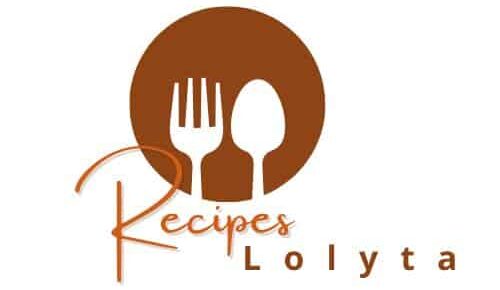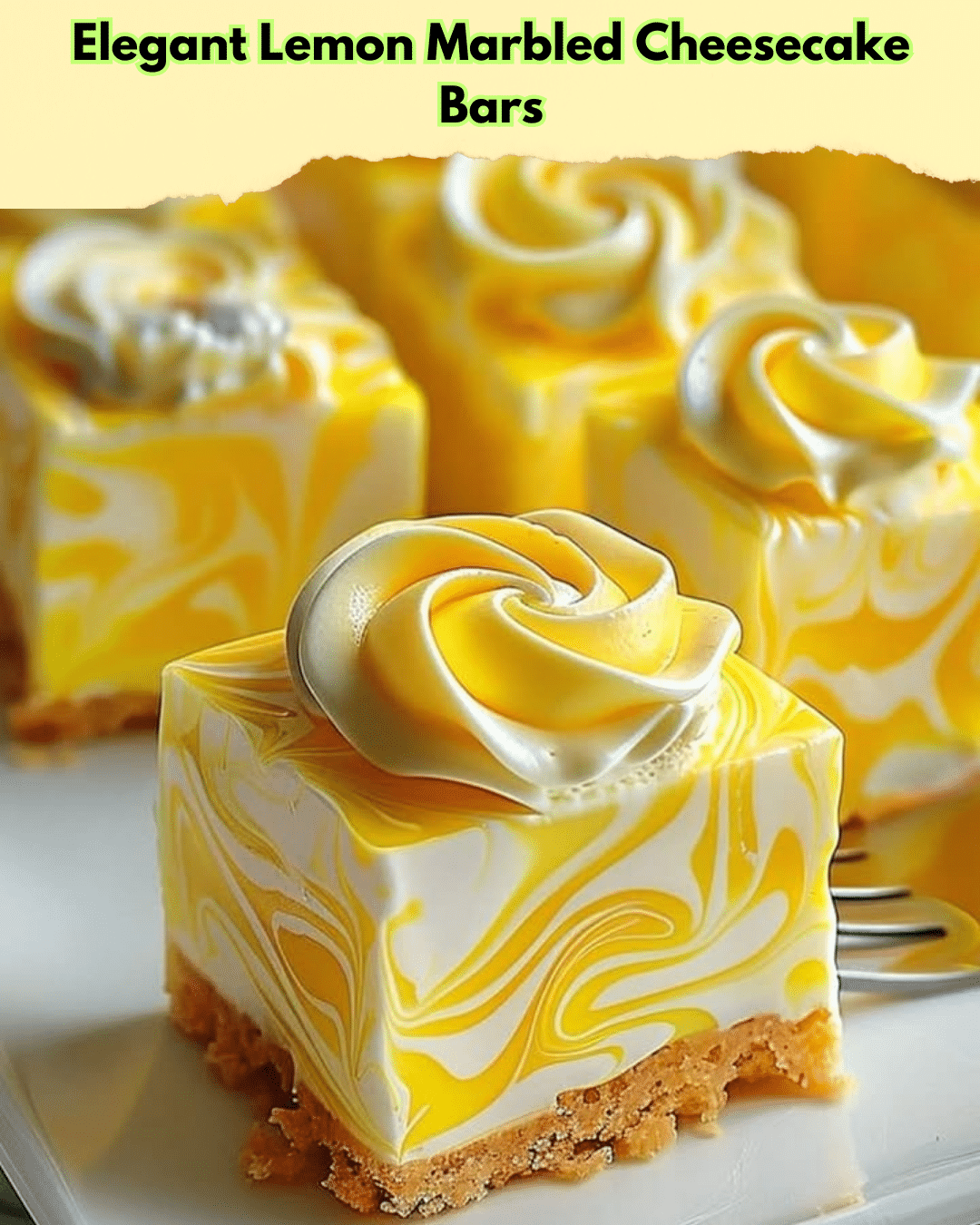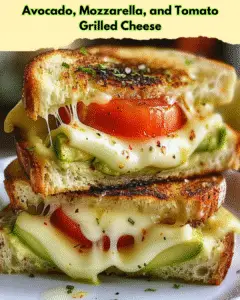Elegant Lemon Marbled Cheesecake Bars: A Delightful Indulgence
There’s nothing quite like the creamy and zesty flavors of Elegant Lemon Marbled Cheesecake Bars to brighten your day. These bars combine the rich decadence of cheesecake with a tangy lemon twist, creating a delightful treat that’s perfect for any occasion. The marbling of lemon throughout provides a burst of citrus in each bite, offering a perfect balance of sweet and tart.
The real charm of these cheesecake bars lies in their velvety texture, which gracefully blends with the crispy, buttery crust, making every mouthful a luxurious indulgence. Imagine savoring the zesty aroma of fresh lemons as you take in the beautiful presentation of these marbled delights. Each bar is a testament to the elegance and finesse that can be achieved with just a few ingredients.
Quick Recipe Highlights
- Flavor Profile: These cheesecake bars delight with a harmonious balance of sweet cream cheese and tangy lemon, finished off with a hint of vanilla.
- Texture: The creamy cheesecake filling perfectly complements the crunchy, buttery crust.
- Aroma: Freshly grated lemon zest and a hint of vanilla meld together in a captivating fragrance.
- Visual Appeal: The intricate marbling of lemon curd against the creamy cheesecake is visually stunning.
- Skill Level Needed: Suitable for home bakers comfortable with basic cheesecake techniques like marbling and setting a crumb crust.
- Special Equipment: You’ll need a springform pan and a zester for the perfect finish.
Recipe Overview
- Difficulty Level: Given its intermediate complexity, this recipe requires precision in marbling and baking times to achieve the desired creamy consistency.
- Category: These bars fall under the dessert category, perfect for ending a meal on a high note.
- Cuisine: With its roots in American baking traditions and a hint of European elegance, this recipe appeals to various palates.
- Cost: Using common ingredients like cream cheese and lemons, the cost remains moderate, making it accessible for most home bakers.
- Season: Best enjoyed during spring and summer when lemons are at their peak, offering the freshest and juiciest flavor.
- Occasion: Ideal for gatherings, celebrations, or simply as a special treat to indulge in any day of the week.
Why You’ll Love This Recipe
The taste and texture appeal of the Elegant Lemon Marbled Cheesecake Bars is simply irresistible. Each bite offers a rich and creamy texture from the cheesecake paired with the refreshing tartness of lemon. The buttery crust adds a delightful crunch that perfectly complements the smooth filling. Whether served as a dessert at a dinner party or a mid-afternoon treat, these bars are sure to impress.
Convenience and preparation benefits make this recipe a winner for home bakers. With a straightforward list of ingredients and simple techniques, it doesn’t require advanced baking skills to achieve perfect results. The recipe’s clear, step-by-step instructions ensure that even novice bakers can create these exquisite cheesecake bars with confidence.
Nutritional advantages are another reason to love this recipe. The use of fresh lemons provides a boost of vitamin C, an essential nutrient for a healthy immune system. Additionally, cream cheese offers calcium and protein, contributing to bone health. While these bars are a treat, they are a more wholesome option compared to many store-bought desserts.
The social and entertaining value of serving these bars cannot be overstated. Whether at a casual brunch or a formal dinner party, these elegant dessert bars will captivate your guests with their stunning appearance and delightful flavor. Share the joy of baking by creating these lemony delights and watch as they become the highlight of any gathering.
Cost-effectiveness and accessibility make this recipe an appealing choice. The ingredients are easy to find at most grocery stores and are budget-friendly, ensuring that you can indulge without breaking the bank. Lemon marbled cheesecake bars provide a gourmet experience without a premium price tag.
Historical Background and Cultural Significance
The origin story of cheesecake traces back to ancient Greece, where it was served to athletes during the first Olympic Games. Over time, this savory source of energy evolved into the sweet versions we know today. The incorporation of lemons into cheesecakes is believed to have begun in Sicily, where the lemon, or “limone,” is a popular ingredient.
Culturally, cheesecake holds a significant place in both European and American culinary traditions. In the US, various regional styles have emerged, with New York cheesecake being the most renowned. Adding lemon to cheesecake is a quintessential twist that speaks to the zest for life and food creativity prevalent in Mediterranean cultures.
The evolution of the recipe has seen it incorporate influences from around the globe. In modern times, the fusion of light citrus and dense cheesecake has garnered international acclaim, becoming a symbol of indulgence that transcends cultural boundaries.
Regional variations are quite common, with each adaptation reflecting local tastes and available ingredients. For instance, some variations may include additional citrus fruits like lime or orange, while others might integrate local cheeses or spices to create unique flavor profiles.
Ingredient Deep Dive
The main ingredient, cream cheese, is central to the cheesecake’s creamy texture and rich flavor. This cheese, first developed in England, has grown in popularity and is a staple in American kitchens. Nutritionally, cream cheese provides a good source of protein and calcium, vital for maintaining healthy bones.
To select the best cream cheese, look for a product that is smooth and easy to spread without being too dry. For storage, keep it refrigerated, tightly wrapped to prevent drying or absorption of odors. Substitutions, such as mascarpone or ricotta, can be made, but they may alter the texture and flavor slightly.
Lemons are another key ingredient, celebrated for their vibrant flavor and nutritional benefits. High in vitamin C, lemons have been used for centuries to boost immunity and add tang to dishes. The aromatic zest imparts a fresh, clean flavor that complements the richness of the cream cheese.
When choosing lemons, opt for those that feel heavy for their size and yield slightly to gentle pressure, indicating juiciness. Store lemons in the refrigerator to extend their life. In case of unavailability, limes can be an alternative, offering a slightly different but still refreshing flavor profile.
Common Mistakes to Avoid
- Overbaking: One of the most common errors is overbaking, leading to a dry and crumbly texture. The cheesecake should still jiggle slightly when removed from the oven.
- Improper cooling: Allow the bars to cool gradually, avoiding the temptation to rush this step, as sudden temperature changes can cause cracking.
- Inaccurate measurements: Precision is key, especially in baking. Ensure ingredients are measured accurately for the best results.
- Skipping the water bath: A water bath helps achieve a silky texture by providing consistent heat distribution.
- Using cold ingredients: Allow ingredients to reach room temperature for smoother blending and reduced risk of lumps.
- Wrong pan size: Ensuring the correct pan size is crucial; otherwise, the cooking time and results may vary.
- Ignoring the crust: The crust provides necessary support; ensure it’s adequately compressed to maintain structure.
- Rushing the marbling: Take your time with marbling to ensure the aesthetic appeal of the finished product.
- Not testing the oven temperature: Always preheat your oven and use an oven thermometer to ensure accurate baking conditions.
- Poor storage: Store the cheesecake bars in an airtight container in the fridge to maintain freshness and avoid drying.
Essential Techniques
Mastering the marbling technique is essential for visual appeal. Marbling involves gently swirling the lemon curd throughout the cheesecake batter, creating a beautiful pattern. Use a spatula or knife, making smooth motions to achieve the desired look without overly mixing the layers.
Understanding the importance of the water bath is crucial for avoiding overcooking and cracking. By placing the pan in a larger dish filled with water, you ensure even cooking and moisture retention. This method is key to achieving that desired creamy, silky texture.
Visual cues are vital in determining when the cheesecake is perfectly baked. Look for a slight wobble in the center when the cheesecake is gently shaken. This jiggle indicates that the bars will set correctly as they cool, maintaining a luscious, creamy finish.
Temperature control during the baking process ensures that the Elegant Lemon Marbled Cheesecake Bars turn out perfectly. Keeping an eye on oven settings and being mindful of cooling will help maintain the integrity and texture of the cheesecake.
For perfect results, always soften cream cheese and eggs to room temperature. This ensures a smoother batter and helps prevent lumps, leading to a creamier and more uniform texture. Avoid over-mixing for a more tender result, and employ gentle folding techniques for a delicate crumb.
Pro Tips for Perfect Elegant Lemon Marbled Cheesecake Bars
Use the best quality cream cheese you can find. It significantly impacts the creaminess and flavor of your cheesecake bars, contributing to that melt-in-the-mouth sensation.
Zest the lemons before juicing to get the most aromatic and flavorful zest. It’s this zest that gives your cheesecake bars that extra punch of lemon fragrance and taste.
Line your pan with parchment paper to ease the removal of cheesecake bars. This simple step can prevent breakage and preserve the presentation of your dessert.
Chill the bars thoroughly before slicing for cleaner cuts and better presentation. This also helps them set properly and makes serving much easier.
Experiment with different types of crusts, such as graham crackers or speculoos, to vary the flavor base of your cheesecake bars, each contributing its own unique taste and texture.
Don’t rush the cooling process; rapid temperature changes can lead to cracks. Allow the cheesecake to cool gradually at room temperature before refrigerating.
Practice patience when marbling. Less is more when swirling the lemon curd into the cheesecake batter. This technique ensures a more distinct pattern and better distribution of flavor.
Taste as you go, adjusting lemon and sugar levels to your preference. Balancing sweetness and acidity is key to a perfect flavor profile.
Variations and Adaptations
Regional variations are plentiful. For instance, adding lime zest and juice creates a distinct key lime twist, offering a taste of the Florida keys in every bite.
Adapt these bars seasonally by integrating flavors like orange or grapefruit during winter months, or add fresh berries during summer for a burst of color and taste.
For dietary modifications, substitute full-fat cream cheese with a lower-fat version for a lighter option. Use gluten-free cookies for the crust to accommodate gluten sensitivities.
Flavor variations can be explored by adding a touch of lavender or basil to the lemon curd, creating an intriguing herbaceous dimension that pairs well with the lemon.
Modify textures by incorporating bits of candied lemon peel for a chewy contrast or by toasting the crust for a crunchier base.
Presentation alternatives include serving the bars topped with fresh whipped cream, lemon slices, or edible flowers, elevating the visual appeal and sophistication of the dessert.
Serving and Presentation Guide
For a stunning presentation, consider plating your Elegant Lemon Marbled Cheesecake Bars on a white or pastel-colored platter to make the vibrant yellow tones pop.
Garnishing can include a dusting of powdered sugar or a dollop of whipped cream, balancing the tangy flavors with a touch of sweetness and enhancing the aesthetic quality.
Traditional accompaniments like a berry compote or a drizzle of raspberry sauce add complementary flavors and colors, making each serving more decadent and inviting.
Modern serving suggestions might have you cutting the bars into different shapes, like triangles or diamonds, for an eye-catching buffet or dessert table presentation.
Temperature considerations suggest serving the bars slightly chilled but not too cold, allowing flavors to be fully appreciated without compromising the creamy texture.
Portion control tips include using a warm, clean knife for slicing, ensuring neat, even portions that enhance both the visual and dining experience.
Wine and Beverage Pairing
For wine pairings, opt for a crisp, chilled sauvignon blanc or a sweet moscato, which will enhance the lemony freshness and creamy richness of the cheesecake bars.
Non-alcoholic alternatives like a sparkling lemonade or a fruit-infused iced tea can complement the citrus notes without overpowering the delicate balance of flavors.
If coffee or tea is more your style, a light, floral tea like chamomile or a rich espresso with a hint of citrus can make the perfect pairing, highlighting different aspects of the bars’ profile.
Temperature considerations for beverages suggest serving whites or sparklings chilled, which refreshes the palate and complements the cool, creamy indulgence of the cheesecake.
When serving, choose glassware that enhances the experience, like flutes for sparkling wine, enhancing both the elegance of the bars and the sophistication of the gathering.
Storage and Shelf Life
Storage methods should involve wrapping the bars in plastic wrap or placing them in an airtight container to maintain moisture and prevent the absorption of refrigerator odors.
Temperature requirements include keeping the cheesecake bars refrigerated and consuming them within five to seven days for optimal freshness and flavor retention.
Container recommendations suggest using glass or metal containers with tight seals to protect the bars from drying out or becoming soggy from excess humidity.
Signs of spoilage can include an off smell, discoloration, or an unusual texture, indicating that the bars should no longer be consumed but rather discarded.
Reheating instructions are generally unnecessary since cheesecake bars are best enjoyed cold. However, if desired, allow a chilled bar to sit at room temperature for 10 minutes before serving.
Freezing guidelines recommend wrapping individual bars tightly in plastic wrap, followed by foil, and storing them in a freezer-safe bag for up to three months, ensuring they maintain quality and flavor.
Make Ahead Strategies
A smart prep timeline will have you assembling the crust and cooking the lemon curd a day in advance, allowing them to cool completely before adding the cheesecake layer.
Storage between steps can involve covering the prepared crust with plastic wrap and refrigerating it, while the lemon curd is stored in an airtight container until needed.
Quality impact assessment: When prepared ahead, flavors tend to meld and intensify, often enhancing the taste and texture of the finished cheesecake bars.
Assembly tips emphasize allowing each layer to cool and set properly before combining. This ensures a smooth, pristine look and distinct layers that are a pleasure to behold and taste.
Reheating guidelines are unnecessary, but bringing the bars to room temperature briefly can enhance flavor and texture without significantly impacting the serving experience.
Fresh element additions like a final dusting of lemon zest or fresh berries can be added just before serving, providing a burst of color and flavor that elevates the entire dish.
Scaling Instructions
Halving the recipe involves careful adjustment of all ingredients, particularly those involved in the baking science, like eggs and cream cheese, ensuring proper balance and taste.
Doubling or tripling the recipe requires attention to equipment adjustments, particularly the use of a larger pan or multiple smaller ones to maintain the right thickness and baking times.
Equipment adjustments may involve using a larger or additional baking dish and ensuring proper oven circulation to account for increased volume and even baking results.
Timing modifications necessitate careful monitoring of baking time since larger quantities may require slightly longer baking durations due to the increased thermal mass.
Storage considerations should also be addressed, with larger batches necessitating additional or larger storage containers to maintain integrity and freshness over an extended period.
Nutritional Deep Dive
The macro breakdown of these bars offers a harmonious balance of fats, proteins, and carbohydrates, with cream cheese providing most of the fat and protein, alongside the crust for carbs.
Micronutrient analysis highlights the contribution of vitamin C from lemons and calcium from cream cheese, with trace minerals supporting bone health and immune function.
Health benefits are derived from a moderate consumption perspective, offering a delicious way to satisfy a dessert craving while providing nutrients like calcium and vitamin C.
Dietary considerations emphasize that, while cheesecake bars are indulgent, mindful portion sizes can allow enjoyment without significantly impacting daily dietary goals.
Portion analysis encourages enjoying a modest piece as part of a balanced diet, integrating these bars into a broader lifestyle that supports overall health and satisfaction.
Weight management tips involve savoring each bite slowly, allowing time to appreciate the flavors and textures, which can enhance satisfaction and reduce the likelihood of overindulgence.
Dietary Adaptations
For those who need gluten-free options, substitute the standard crust with a gluten-free cookie or biscuit alternative like almond flour crackers, ensuring all other components are similarly suitable.
Dairy-free adaptations can be achieved by opting for dairy-free cream cheese and butter, ensuring to maintain the cheesecake’s creamy integrity with products that mimic traditional textures.
To create a vegan-friendly version, use plant-based cream cheese, a flax egg substitute for the binding elements, and vegan butter alternatives to craft a delightful treat suitable for vegans.
Low-carb variations might involve using almond flour as a crust base and sweetening with a low-carb sweetener like erythritol or monk fruit, preserving flavor while reducing carbohydrates.
A keto approach would adjust fats and sweeteners according to keto guidelines, focusing on high-fat content while selecting appropriate sweeteners to support ketogenic dietary preferences.
Paleo adaptations can emphasize using natural sweeteners like maple syrup, alongside nut-based crusts and dairy-free products, ensuring compliance with paleo dietary rules and philosophy.
Low-FODMAP alternatives should focus on fewer ingredients like lactose-free cream cheese and low-FODMAP crust options, accommodating dietary needs without sacrificing enjoyment.
Additional specific diets can be addressed by highlighting suitable variations and substitutions that comply with dietary restrictions while maintaining flavor and texture integrity.
Troubleshooting Guide
Texture issues might arise if the bars are overbaked or incorrectly set. Keeping a close eye on baking times and testing with the jiggle method can help ensure the perfect creamy texture.
Flavor balance can often be adjusted by monitoring lemon juice and zest quantities, ensuring they enhance without overwhelming the cream cheese’s natural sweetness.
Temperature problems, such as uneven baking, can be remedied by ensuring proper oven calibration and potentially using a water bath to help regulate heat distribution evenly across the pan.
Equipment challenges, like working with unfamiliar tools, are best managed by thoroughly understanding the function and operation of equipment involved, like springform pans and mixers.
Ingredient substitutions require thoughtful consideration to ensure flavor and texture integrity is maintained, often testing alternative ingredients in smaller quantities to assess their impact beforehand.
Timing concerns should be addressed by planning a careful timeline, accounting for both baking and cooling periods essential to the success of the cheesecake bars.
Recipe Success Stories
Community feedback has consistently praised the balance of flavor and texture in these elegant cheesecake bars, noting their suitability for both everyday indulgence and special occasions.
Variation successes have been shared, with many bakers exploring additional citrus and berry inclusions, enriching the flavor profile and creating personalized versions of the classic favorite.
Adaptation stories highlight creative dietary adjustments that allow broader enjoyment across a range of preferences and needs, celebrating the versatile nature of this beloved recipe.
Reader suggestions often focus on presentation improvements and creative garnishing ideas, elevating the simplicity of the bars with innovative enhancements that surprise and delight.
Photography tips from successful bakers emphasize highlighting the unique marbled pattern and contrasting colors, utilizing natural lighting to capture their beautiful essence.
Frequently Asked Questions
Can I make the cheesecake bars ahead of time?
Absolutely, you can prepare the cheesecake bars up to two days in advance. Store them in the refrigerator, tightly covered, to maintain their freshness and allow the flavors to meld perfectly.
What can I use instead of lemons?
If lemons are unavailable, try substituting with limes or oranges. These citrus fruits offer similar acidity, bringing a unique twist to the bars while maintaining the refreshing zing.
Why did my cheesecake crack?
Cracks often occur due to sudden temperature changes or overbaking. Ensure a slow cooling phase and use a water bath to stabilize the cooking process for a smoother, crack-free finish.
How do I achieve the perfect marbling effect?
Achieving perfect marbling requires practice and patience. Gently swirl the lemon curd through the cheesecake batter using a knife or skewer for a controlled, artistic look without mixing thoroughly.
Can I freeze the cheesecake bars?
Yes, cheesecake bars freeze well. Wrap them tightly in plastic and foil, storing in a freezer-safe bag for up to three months. Thaw overnight in the refrigerator before serving.
What if I don’t have a springform pan?
A regular baking dish can be used as a substitute for a springform pan. Ensure to line it with parchment paper for easier removal and serving of the bars without structural damage.
How can I reduce the sugar content?
To lower sugar content, consider using a natural sweetener like stevia or monk fruit. Adjust to taste, as these sweeteners can sometimes be more potent than traditional sugar.
What’s the best way to store leftovers?
For best results, store leftover bars in an airtight container in the refrigerator for up to seven days. This method helps preserve the creamy texture and prevent drying out.
Can I use pre-made lemon curd?
While homemade lemon curd optimizes freshness and flavor, pre-made varieties can be a time-saving alternative. Ensure high quality by selecting brands known for their authentic taste.
What size should I cut the bars for serving?
Depending on the occasion, cutting into 12 even pieces creates a perfect portion size. For larger gatherings, consider smaller squares for convenient, bite-sized servings.
Are there vegan substitutes for cream cheese?
Yes, several vegan cream cheese options on the market can be used as substitutes. Look for those with a texture similar to dairy cream cheese for the best results and consistency.
Additional Resources
Related recipes include lemon tart and key lime pie, both of which feature citrus and cream elements that appeal to fans of these elegant cheesecake bars, providing additional dessert options.
Technique guides on marbling and water bath baking can enhance skills, empowering the home baker to achieve consistently excellent results, particularly with visually intricate recipes like these bars.
Ingredient information for understanding the impact of different types of sweeteners, fruits, and dairy can assist in adjustments and substitutions, allowing for personal customization of the recipe.
Equipment recommendations, from selecting high-quality springform pans to understanding the benefits of precise measuring tools, can make a significant difference in achieving professional-level results.
Seasonal variations explore how to incorporate fresh, in-season ingredients into your baking, enriching the bars with natural, sustainable options that support local farms and offer peak flavor.
Print
Elegant Lemon Marbled Cheesecake Bars
Description
A delightful dessert with a harmonious blend of creamy cheesecake and tangy lemon curd, swirled together for a beautiful presentation.
Ingredients
For the Crust:
- 1 cup graham cracker crumbs
- 3 tablespoons unsalted butter, melted
- 16 oz cream cheese, softened
- 1 cup granulated sugar
- 3 large eggs
- 1 teaspoon vanilla extract
- 1/3 cup lemon juice
- 2 tablespoons lemon zest
- 1/2 cup lemon curd
Instructions
1. Prepare the Crust:
- Preheat the oven to 325°F (165°C). Line a 9×9 inch baking pan with parchment paper.
- In a bowl, mix graham cracker crumbs and melted butter. Press mixture into the bottom of the prepared pan to form a crust.
- In a large mixing bowl, beat the cream cheese and sugar until smooth. Add the eggs one at a time, mixing well after each addition. Stir in the vanilla extract, lemon juice, and lemon zest.
- Pour the cheesecake mixture over the crust. Drop spoonfuls of lemon curd onto the filling and use a knife to swirl it into the cheesecake mixture for a marbled effect.
- Bake for 30-35 minutes or until the center is set. Allow to cool completely, then refrigerate for at least 3 hours before cutting into bars.
Notes
You can customize the seasonings to taste.




